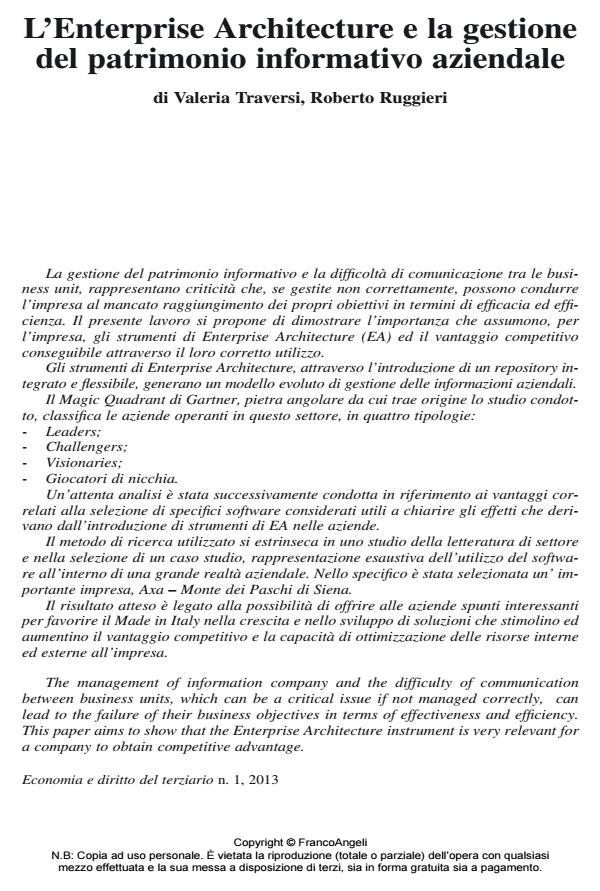L’Enterprise Architecture e la gestione del patrimonio informativo aziendale
Journal title ECONOMIA E DIRITTO DEL TERZIARIO
Author/s Valeria Traversi, Roberto Ruggieri
Publishing Year 2013 Issue 2013/1
Language Italian Pages 15 P. 49-63 File size 220 KB
DOI 10.3280/ED2013-001003
DOI is like a bar code for intellectual property: to have more infomation
click here
Below, you can see the article first page
If you want to buy this article in PDF format, you can do it, following the instructions to buy download credits

FrancoAngeli is member of Publishers International Linking Association, Inc (PILA), a not-for-profit association which run the CrossRef service enabling links to and from online scholarly content.
The management of information company and the difficulty of communication between business units, which can be a critical issue if not managed correctly, can lead to the failure of their business objectives in terms of effectiveness and efficiency. This paper aims to show that the Enterprise Architecture instrument is very relevant for a company to obtain competitive advantage. The Enterprise Architecture instrument, through the introduction of integrated and flexible repository, produce a sophisticated model for enterprise information management. The Magic Quadrant of Gartner, basic element from which originated the study conducted, ranking companies in this area in four typology: - Leaders; - Challengers; - Visionaries; - Niche players. A careful analysis was conducted among to the benefits associated with the selection of specific software considered useful for understanding the effects that result from introduction of EA instrument in the enterprise. The research method used is expressed in a careful analysis of the field literature and in the selection of a case study, that is a comprehensive representation by the use of software in large organizations. In particular has been selected a major company, "Axa - Monte dei Paschi di Siena" reality that has been chosen to use Corporate Modeler Suite. The expected result is related to the ability to offer companies interesting ideas to promote the Made in Italy in the growth and development of solutions that stimulate and increase competitive advantage and the ability to optimize resources inside and outside the firm.
Valeria Traversi, Roberto Ruggieri, L’Enterprise Architecture e la gestione del patrimonio informativo aziendale in "ECONOMIA E DIRITTO DEL TERZIARIO " 1/2013, pp 49-63, DOI: 10.3280/ED2013-001003